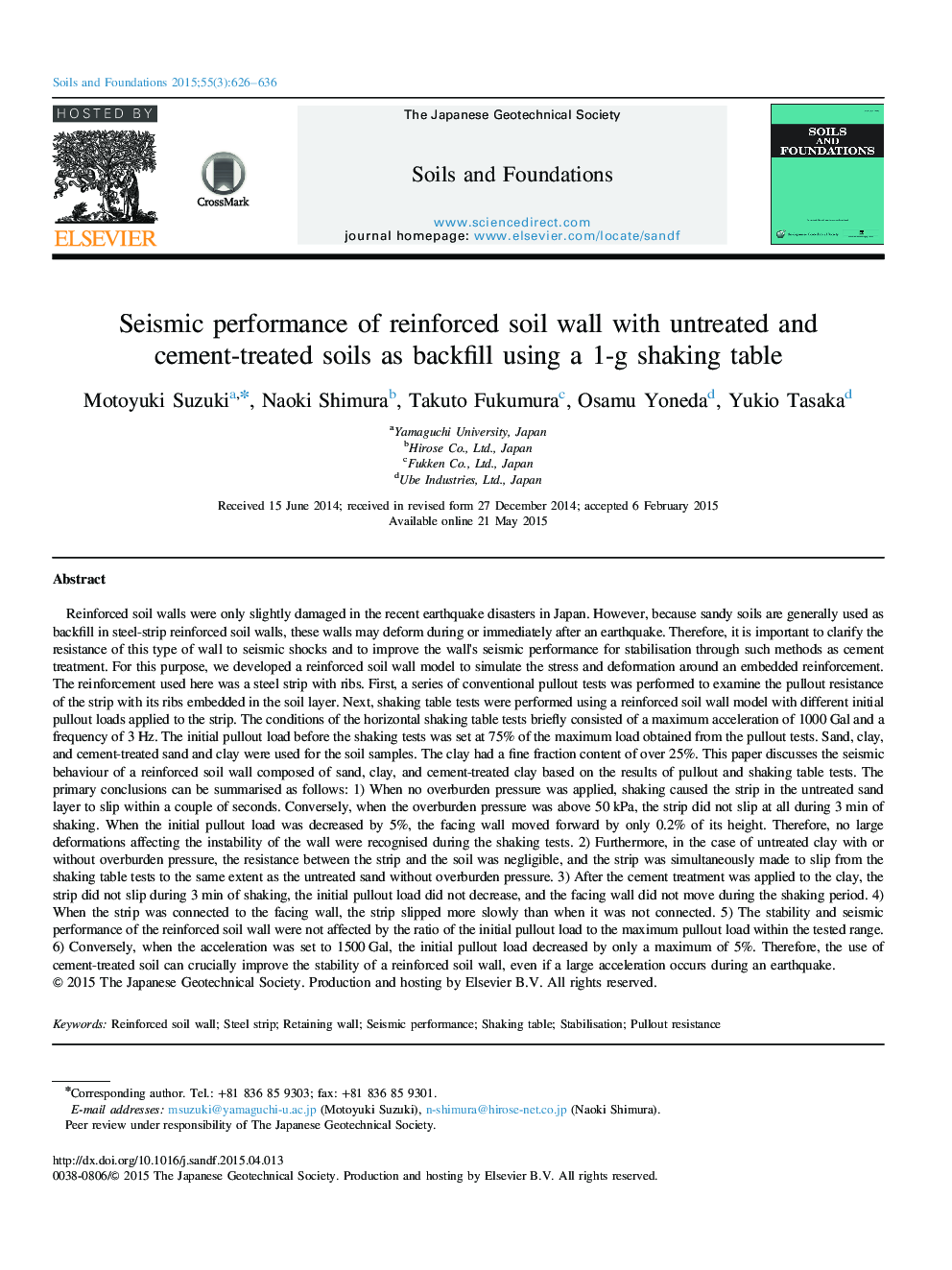| کد مقاله | کد نشریه | سال انتشار | مقاله انگلیسی | نسخه تمام متن |
|---|---|---|---|---|
| 307193 | 513343 | 2015 | 11 صفحه PDF | دانلود رایگان |
Reinforced soil walls were only slightly damaged in the recent earthquake disasters in Japan. However, because sandy soils are generally used as backfill in steel-strip reinforced soil walls, these walls may deform during or immediately after an earthquake. Therefore, it is important to clarify the resistance of this type of wall to seismic shocks and to improve the wall׳s seismic performance for stabilisation through such methods as cement treatment. For this purpose, we developed a reinforced soil wall model to simulate the stress and deformation around an embedded reinforcement. The reinforcement used here was a steel strip with ribs. First, a series of conventional pullout tests was performed to examine the pullout resistance of the strip with its ribs embedded in the soil layer. Next, shaking table tests were performed using a reinforced soil wall model with different initial pullout loads applied to the strip. The conditions of the horizontal shaking table tests briefly consisted of a maximum acceleration of 1000 Gal and a frequency of 3 Hz. The initial pullout load before the shaking tests was set at 75% of the maximum load obtained from the pullout tests. Sand, clay, and cement-treated sand and clay were used for the soil samples. The clay had a fine fraction content of over 25%. This paper discusses the seismic behaviour of a reinforced soil wall composed of sand, clay, and cement-treated clay based on the results of pullout and shaking table tests. The primary conclusions can be summarised as follows: 1) When no overburden pressure was applied, shaking caused the strip in the untreated sand layer to slip within a couple of seconds. Conversely, when the overburden pressure was above 50 kPa, the strip did not slip at all during 3 min of shaking. When the initial pullout load was decreased by 5%, the facing wall moved forward by only 0.2% of its height. Therefore, no large deformations affecting the instability of the wall were recognised during the shaking tests. 2) Furthermore, in the case of untreated clay with or without overburden pressure, the resistance between the strip and the soil was negligible, and the strip was simultaneously made to slip from the shaking table tests to the same extent as the untreated sand without overburden pressure. 3) After the cement treatment was applied to the clay, the strip did not slip during 3 min of shaking, the initial pullout load did not decrease, and the facing wall did not move during the shaking period. 4) When the strip was connected to the facing wall, the strip slipped more slowly than when it was not connected. 5) The stability and seismic performance of the reinforced soil wall were not affected by the ratio of the initial pullout load to the maximum pullout load within the tested range. 6) Conversely, when the acceleration was set to 1500 Gal, the initial pullout load decreased by only a maximum of 5%. Therefore, the use of cement-treated soil can crucially improve the stability of a reinforced soil wall, even if a large acceleration occurs during an earthquake.
Journal: Soils and Foundations - Volume 55, Issue 3, June 2015, Pages 626–636
